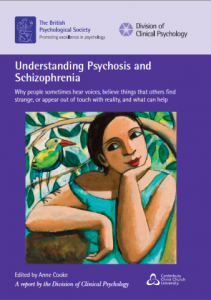The experience of taking amphetamine, including the subjective pleasurable experiences of initial use, amphetamine-induced anxiety and psychosis, and withdrawal symptoms following long-term use. Also includes a brief consideration of the various factors that can influence the amphetamine experience. (964 words)
The ‘drug experience’ produced by a particular psychoactive substance depends on both drug and non-drug factors. Drug factors are the chemical properties or type of drug used, the dose, route of administration, and presence or absence of another drug. Non-drug factors include personal characteristics of the user (e.g. biological make-up, personality, previous experience), and the context or setting in which the drug is taken.
A person will first try a drug because of social or intrapersonal factors, such as curiosity about the effects of a drug, or the fact that their friends are taking it. They will probably have certain expectancies about the effects of the drug from conversations with experienced users and/or because of media exposure.
Once a person has taken a drug, the drug experience creates cognitive expectancies which become another factor that influences subsequent drug-taking. A person may continue to take the drug to increase his psychological comfort or change his level of consciousness.
Low doses of amphetamine produce a number of subjective effects: feelings of euphoria; heightened alertness; increased energy and excitement; increased feelings of well-being, confidence and power; increased ability to concentrate and stay awake; increased sociability and friendliness; a feeling of being less bored or tired; hyperactivity, talkativeness, and a rapid flow of ideas; a suppression of sexual inhibitions; lack of desire for food; nervousness and anxiety.
With higher drug doses, there are other effects. These are much more likely to occur when the drug has been taken repeatedly rather than on a single occasion. The user may experience repetitive (stereotyped) thought patterns and show repetitive behaviours, e.g. continually take apart and re-assemble some object, or pick continually at their skin. They may show restlessness, irritability, and various types of anxiety condition, including panic states.
The person may develop suspiciousness, paranoia (delusions of persecution), and experience visual and auditory hallucinations. This is known as amphetamine psychosis, which resembles paranoid schizophrenia.
Amphetamine psychosis is usually seen with chronic use of drug, but can be seen after an acute administration. The incidence of amphetamine psychosis increases greatly when the user switches to intravenous drug administration.The psychosis is transitory and usually terminates after drug use is terminated. Long-term amphetamine use can sometimes lead to sudden and intense acts of aggression and violence.
The subjective effects of amphetamine and similar-acting substances are not fixed. The amphetamine-like stimulant methylphenidate (Ritalin) is, paradoxically, used to treat hyperactivity in children. Some adults report the drug exerting a calming effect, allowing them to cope better.
In well-controlled laboratory conditions, under conditions where neither subject nor experimenter knew whether drug or placebo was administered, a fixed dose of amphetamine produced either euphoria or anxiety in different subjects.
Once a person has tried amphetamine, they may use the drug on a recreational basis, even over an extended period of time. They may keep a strict adherence to a particular pattern of drug use so that the drug is only used on certain occasions (e.g. weekends). The user retains control over drug use and there may be no medical or social complications—however, there is the possibility of legal sanction. Of course, a person may try amphetamine once and never do so again.
However, the pattern of drug-taking may intensify and a number of changes may occur. For example, a person may switch from oral or intranasal use to intravenous use. Drug effects will intensify when such a change occurs.
In another pattern of use, the person initiates repeated ‘runs’, taking amphetamine for hours and sometimes days. They may snort new lines of drug whenever they feel the drug effects wearing off. This pattern of drug-taking is more evident with cocaine, which is a much shorter–acting drug.
In yet another pattern of use, they may chronically abuse amphetamine in combination with depressant drugs. They may drink large amounts of alcohol whilst under the influence of amphetamine.
Users may use depressant drugs (benzodiazepines, alcohol, opiates) to take ‘the edge off’ the stimulant, and help them feel less anxious. Research suggests that users who abuse stimulants and depressants experience more psychological and physical problems than those who only abuse stimulants.
Tolerance develops to many of the psychological and physical effects of amphetamine, e.g. euphoria, anorexia, hyperthermia and hypertension. This tolerance may develop within hours to days. However, there appears to be little tolerance to the anxiogenic effects of the drug. In fact, repeated use of amphetamine may sensitise individuals to amphetamine psychosis.
The effects of a single dose of amphetamine lasts 2 – 4 hours and generally leaves the user feeling tired after the drug’s primary effects are over. It may take as long as a couple of days to feel normal again. With chronic drug use, feelings of tiredness, lethargy and irritability become stronger and may have a more dramatic onset following the wearing off of drug effects.
The user may want to keep taking drug to avoid these feelings. Tolerance develops with regular use and higher doses will be required. Eventually, ‘what goes up must come down’. The ‘withdrawal’ effects are even stronger when a user has completed repeated ‘runs’ over a period of days. Amphetamine produces a withdrawal syndrome, which not only includes tiredness, but also anhedonia (an inability to feel pleasure), depression, anxiety, dysphoria, sleep disturbances, and a strong craving for drug.
The person may experience terrible mood swings as he oscillates between periods of drug-taking and withdrawal. He may experience periods of paranoia and anxiety when taking the drug, and periods of deep depression when not taking the drug. The impact of this on psychological well-being can be considerable.







